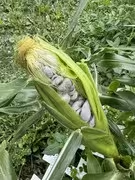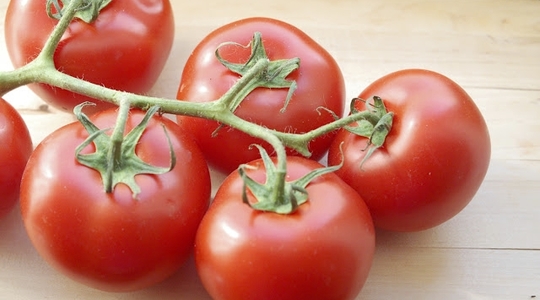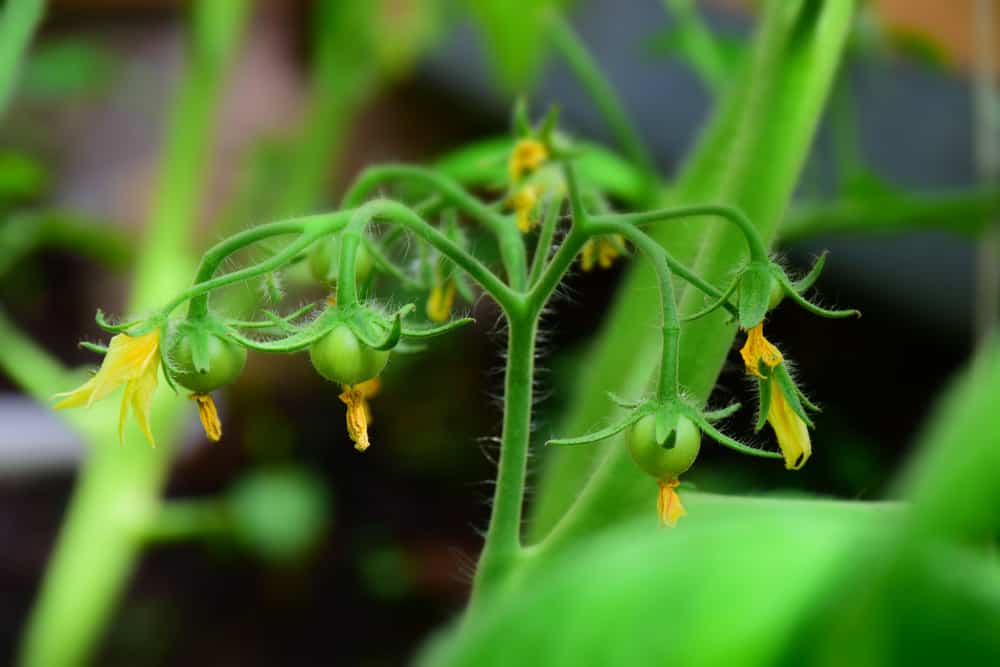|
|
Post by epaul on Aug 1, 2024 11:26:44 GMT -5
Poly sheeting and other types of landscape fabric block weeds and preserve soil moisture, which is what you want it to do. While plastic "mulch" won't add anything good and useful to your soil like organic mulch, it is an inert material and does no harm (unlike that wet mat of moldy grass clipping turning into sour, smelly, disease harboring sludge).
And, if soil-borne leaf diseases become a problem in your garden, plastic won't harbor the bacteria that produces them (organic mulches can harbor everything there is to harbor... those cocoa beans are pretty good in that regard, however.) But, it can takes a lot of plastic to keep your plants safe from fungal diseases, mobile wretches they are.)
Poly row coverings work really well and are mainstay for most veggie farms.
If you are using a landscape fabric that uses a weave that promises to allow water to through, don't expect it to allow very much water to pass through in a gardening useful fashion... darn stuff sheds water like a duck. And the expensive stuff works no better than the cheap. It's fine for long term use under pavers, but if you want the water to your plants, stick your hose under the stuff or cut your own holes in it.
|
|
|
|
Post by epaul on Aug 1, 2024 10:55:02 GMT -5
They are wonderful. Does what a mulch should do. And they allow for great water and gas exchange and not a friendly habitat for mice and voles. (gaps and pore space is big plus for mulch... the lack of which is reason why a mat of wet grass is poor mulch... no pore space for air and gas exchange. Some are perhaps now wondering, so why can plastic sheeting can work so well in the garden? That's a good question.
|
|
|
|
Post by epaul on Aug 1, 2024 9:35:07 GMT -5
Good morning, everyone. Today I'll attend my Zoom social breakfast... I'm having my first Zoom social meeting this morning, as well! I'm looking forward to it. But, as it's just Casper and me, I don't quite understand why computers need to be involved. But, that's how it's done, I guess. Modernity! |
|
|
|
Post by epaul on Aug 1, 2024 9:25:52 GMT -5
If the grass clippings are dry and are applied thinly, an inch or two at the time, they make a fine mulch. Don't worry about N consumption. Any that occurs will be at the surface and you are just feeding the N cycle that leads to good things. (unlike all those logs and tree stumps buried in Tamarack's bed)
But, dumping a deep pile of wet grass clippings fresh from your mower's grass bag is a bad mulch. Bad, bad, bad. The pile of wet grass will mat up and form a sour seal limiting the amount of oxygen and moisture that can reach the soil. Plus, it can cause genital warts. Or so Todd told me. So, don't do it.
(don't add grass clipping if you had just sprayed your lawn with a broadleaf herbicide for dandelions or some such. Wait four to six weeks.)
The bottom line is: If something is working, it is working. If it isn't, do something else.
|
|
|
|
Post by epaul on Jul 31, 2024 23:33:03 GMT -5
The wood chips will compete with the plants for the available nitrogen and can create a short term nitrogen deficiency, depending on size, amount, and placement of the wood chips. It is called, alternately, nitrogen lock up/nitrogen tie up.
Bacteria in soil will begin to break down/decompose the wood chips. This bacteria multiples like crazy as it feasts on the wood. And this bacteria needs nitrogen to live, so it consumes nitrogen as it consumes the wood; locks this consumed nitrogen up/ties it up. Once the wood is broken down/decomposed, the bacteria that had been chowing down on it die off and the nitrogen they had consumed/tied up is released.
Short term pain, long term gain. But, depending on a host of variables, the short term pain could be affecting your tomato crop this year.
Variables. Lots and lots of them.
Proximity is one. If the wood chips are on the surface, applied as a mulch, the nitrogen they tie up will also be near the surface. Plant roots located deeper in the soil profile may have plenty of N. But if the wood chips are mixed up throughout the soil profile, they can tie up N through out the soil profile.
Amount and size of wood. A few little chips won't affect much of anything. Lots of big chunks will tie up a lot of the available N.
Bottom line. You don't want a lot of wood in your raised bed's soil.. But, if you do have wood chips in your soil mix, no problem, just add extra N to compensate for the wood-eating bacteria's appetite. Long term, the wood will break down and add useful organic material to your bed. But until it gets there, it can be a nitrogen hog, so toss in extra N.
|
|
|
|
Post by epaul on Jul 31, 2024 19:06:47 GMT -5
He was a nasty person.
|
|
|
|
Post by epaul on Jul 31, 2024 18:44:02 GMT -5
Whoops. Fixed.
|
|
|
|
Post by epaul on Jul 31, 2024 18:06:20 GMT -5
Now I dance home and alone...
but, occasionally... I leave a curtain open.
|
|
|
|
Post by epaul on Jul 31, 2024 17:52:08 GMT -5
I had my own Mr. Tanner experience.
I was the star of the stage in Middle River. I rocked. I ruled. And my friends told me I was too good to stay in Middle River. I needed to take my act to Grand Forks. So I did. And it worked. I starred in Grand Forks! I was happy! And if only I had had the wisdom to stop there and enjoy the right-sized pond, the Grand Forks stage.
But, no, I was told I could go further, bigger. And I believed the seductive praise. I could go further!
So, I went to Fargo!
And it was a disaster. I was panned by the critics. . A masochistic part of me has kept a particularly nasty review published in the Fargo Forum. Every so often, I pull it out to keep me centered. I feel the need now:
|
|
|
|
Post by epaul on Jul 31, 2024 15:30:42 GMT -5
Bike Acquisition Syndrome
Nice looking bike. But, where's the motor?
|
|
|
|
Post by epaul on Jul 31, 2024 15:12:27 GMT -5
... The point isn't Mr. Tanner himself but how the world treats people whose only goal is to share that which moves them... ? Whose goal was this sharing business? Not Mr. Tanner's. It wasn't his idea to go off to New York to make a big splash and possibly make singing his vocation. His friends pushed him into that; their idea, not his. If anything, the theme of the song is beware the flattery of friends. Follow your street, not theirs. The song is very clear. Singing wasn't his livelihood (business), it was something very personal that made him whole. The chorus repeats that over and over. You can't miss it. If you stay within the boundaries of the song, it is clear that no audience was necessary in order for Mr. Tanner's singing to make him whole and fill his life. The business about needing to go off to New York City and make a Big Splash with his singing, well, that was the "friends" idea. Their goal, not his. Everything was fine and dandy until he allowed his "friends" to inflate his head. Beware the ambition of "friends". Follow yours, not theirs. The song begins with Mr. Tanner singing for himself because it makes him whole and it ends with Mr. Tanner singing for himself because it makes him whole. Whole is good! |
|
|
|
Post by epaul on Jul 31, 2024 11:00:58 GMT -5
Interesting. The fellow that apparently inspired Harry Chapin to write the song.
|
|
|
|
Post by epaul on Jul 31, 2024 10:51:39 GMT -5
|
|
|
|
Post by epaul on Jul 31, 2024 10:20:48 GMT -5
epaul--you're a tomato whiz, so can you help with this corn...?  That corn is beyond help. But, if you want to eat it, you still can as the growth you see is basically just another mushroom (the fruiting/reproductive portion of a fungus... fungus flower?). Farmers call that disease "smut". Corn smut if it is on corn, barley smut if on barley, wheat smut if... you get the idea. It is a fungus that infects the flowering portions of a grass (which corn, wheat, barley etc. all are). I wouldn't eat barley smut, nasty stuff that it is. But, Euell Gibbons types will chow down on corn mushrooms. Apparently it is quite nutritious. (I keep telling you folks, corn is amazing!) |
|
|
|
Post by epaul on Jul 30, 2024 19:33:38 GMT -5
Eyeball test.
Terry's tomatoes clearly don't need any added Nitrogen, the color is good and they are growing like crazy. Don's tomatoes do need a shot of N. Color is pale and yellowish (especially the new growth, the true tell of N deficiency).
When a tomato plant doesn't need N. Don't add any. From a home gardener's perspective, the goal is to get a good crop of tomatoes as soon as possible (not to produce the maximum amount of tomatoes at an end of season harvest date down the road, as a commercial grower might wish).
Nitrogen stimulates foliage growth, but once the plant is up and growing well, to anthropomorphize, you want your tomato plant to set its attention to producing and ripening fruit as soon as possible, not growing all the luxuriant foliage it possibly can for a late season kick ass record crop (a crop that might not even be half-completed come mid-September when short days and cool nights reduce the fruits taste and sweetness and frost threatens to put and end to the entire show).
(a tomato ripened during the short days and cool nights of late September might only have half the sugars and altenoids* as a tomato ripened during the long days and peak warmth of August.)
If you have good foliage but aren't getting the fruit set you think you should, it can be useful to give the plant a shot of liquid fertilizer that in high in phosphorous (and low in nitrogen, which you don't need). What nitrogen is to green growth, phosphate is to fruit set and fruit production (which is why commercial commercial tomato and cut flower growers will use fertilizer blends that are low in N (nitrogen) and high in P (phosphorous).
Very, very generally:
Nitrogen (N) is for good foliage production.
Phosphorous (P) is for flower production and fruit set.
Potassium (K) is for general plant health and stable cell production.
N,P,K, the big three of fertilizer.
* don't bother looking this word up as I just made it up to stand for that group of complex chemicals that give a tomato that tomato flavor
|
|
|
|
Post by epaul on Jul 30, 2024 18:36:07 GMT -5
6 Wow! Mn only has had two.
Indiana is second on the list of states with the most VPs. Without Googling, what state has had the most VPs?
(hint: What duck has a large money bin?)
|
|
|
|
Post by epaul on Jul 30, 2024 17:36:27 GMT -5
Seems like he would make a fine First Gentleman.
Could be interesting, though. What if Kamala Harris finds out he's Jewish?! And what if he finds out Kamala is a supporter of Hamas?!
Could be fireworks!
|
|
|
|
Post by epaul on Jul 30, 2024 16:00:23 GMT -5
Thanks, Bill.
|
|
|
|
Post by epaul on Jul 30, 2024 15:55:04 GMT -5
Prune suckers and unwanted stems when they are small and have no flowers or fruit. You want to prune before a plant has wasted any energy in the growth of an unwanted stem.
If pruning after the fact (the stem has grown out and has flowers developing) prune on the backside of any developing flowers. Any flower seen is a flower to be kept. Pinching off the tip of any growing stem will send the plant's energy to other stems you are more interested seeing developed.
Pruning becomes an art (with any plant or tree). Envision the plant you want, form a plan, and carry it out. (with trees, always best to do the pruning in fall after leaf drop. Early bud and leaf is the worst time. The tree should be dormant.)
I like pruning. Tomatoes, apple trees, any tree.
|
|
|
|
Post by epaul on Jul 30, 2024 14:05:18 GMT -5
As for fruit pruning. Limiting the number of fruit that develop on a fruiting bracket/stem will lead to slightly larger fruit, but I have never noticed much of a difference when I have done it (unlike with pumpkins, that can get pretty noticeable. People that go for contest winners will only let one pumpkin grow per plant). Below is a picture of a fruit bract. Never clip those off. But, if, when the tomatoes looked like wee marbles, if you had pinched off four of those little tomatoes you see below while they were in the baby stage, the remaining two survivors would have been slightly bigger, but, man, that would have been a big waste of tomato. Two very slightly larger ones compared to six nice ones? Nope, not for me.   Now it is common that you will see a fruiting bract with four of five nicely developing egg-sized tomatoes of roughly the same size while on the very edge of the bract there will be a couple marble-sized ones. It won't hurt if you clip those off, but there will be no great gain, either. |
|